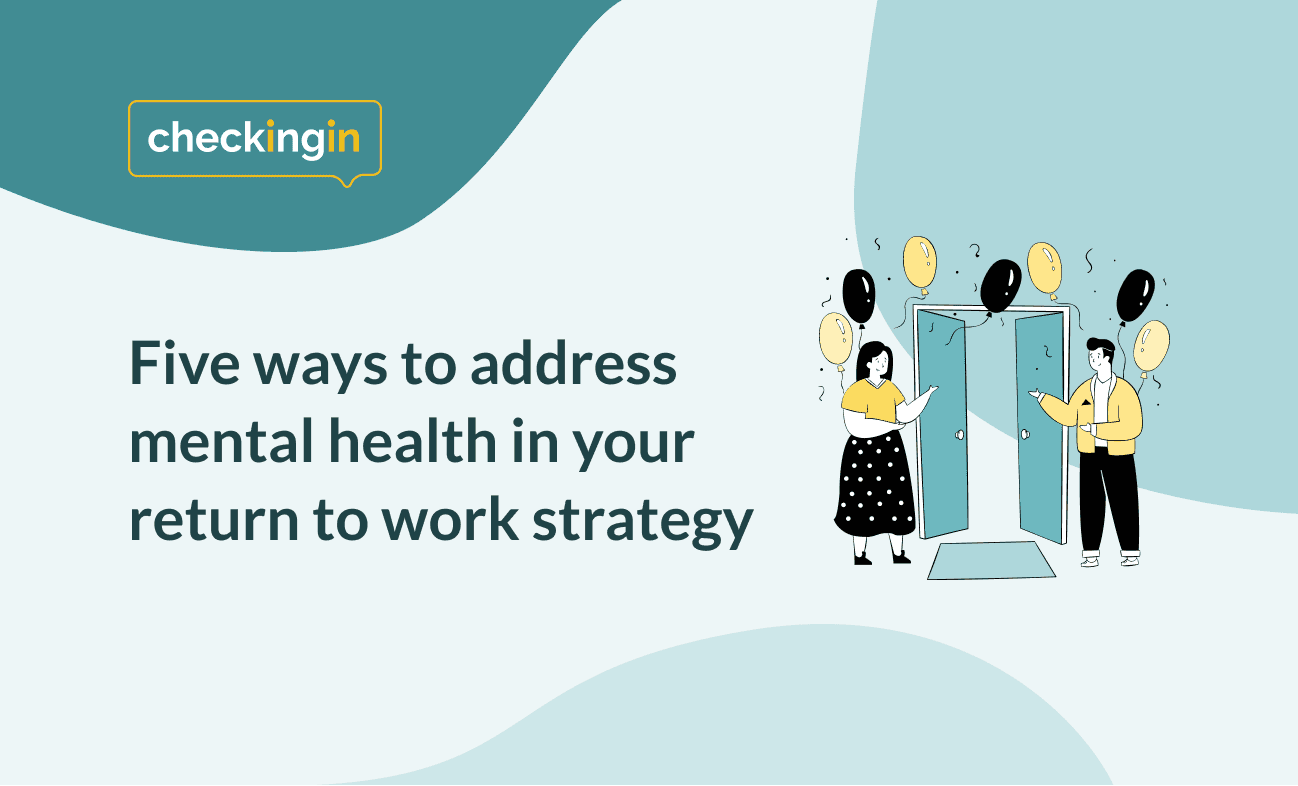Five ways to address mental health in your return to work strategy
September 29, 2021by Molly Johnston in Workplace Wellbeing
As the world returns to a new state of normalcy, there will no doubt be questions around return to work policies. We've put together five ways you can address mental health in your return to work strategy.
The human brain is hardwired to resist change. To keep us safe, it favors consistency – even if we’re no longer dodging predators in the savannah. During the pandemic, many of us established routines that made it easier to navigate remote work and public health measures. As some organizations welcome people back to the office, those shifting routines can trigger new mental health considerations.
No matter how you manage these challenges, it’s essential to promote an environment of physical and psychological safety. People need to feel comfortable expressing their preferences and concerns, and speaking up when something isn’t working.
After all, organizations don’t change; people do. And people can be extremely adaptable if they’re supported through transitions. Here are some key mental health hurdles to watch for during your return to work plan – and strategies to help your teams feel safe and empowered in the process.
1. Travel time
People who traveled significant distances to work before the pandemic suddenly found themselves with extra time on their hands. Some used these recovered hours to exercise or cook or get more sleep, while others were busy caring for children and family members. Whatever their circumstances, a return to the office can mean the return of commuting.
It’s easy to see this change through a binary lens, but keep in mind that some people actually missed their commutes. They relished the clear boundary between home and work, and used that time to prepare for the day and unwind when it was over. Try to stay open to different experiences and avoid generalizations.
2. Autonomy
Choosing when, how, and where you work can be freeing. This is another reason why some employees will feel (and even mourn) the shift from remote to in-office work more acutely than others. Individuals may also interpret leadership’s desire for collaborative, in-person work as a lack of faith; a demotion from the days when people were both trusted and required to work from home.
Studies have shown that a sense of autonomy improves employees’ productivity, both as individuals and in groups, and boosts their mood. Whenever possible, reinforce the positive reasons for in-office work. Express and demonstrate a continued climate of trust. And ensure people retain an appropriate level of control over their own work, schedules, and choices.
3. Specific mental health concerns
We’ve all felt the mental and emotional effects of living through a pandemic. As employees come back together, some people may feel worried about office cleanliness or their colleagues’ vaccination choices. Even social norms have been upended: do we still shake hands? Can I go for lunch with my team?
Everyone will have different comfort levels. As we write this, Covid is still evolving – and no one has all the answers. One approach isn’t necessarily better, safer, or more effective than another. As always, our goal should be to stay open and willing to listen to concerns. Validate unique experiences with empathy and understanding. And know that people may exhibit fear, anxiety, withdrawal, agitation, or other signs that might indicate mental health issues that could require additional support.
4. Hybrid work models
Across industries, many organizations are choosing a hybrid approach that blends remote and in-office work. In addition to the practical considerations of this model, it’s important to understand that culture can change significantly with a hybrid arrangement. People may initially feel lost, or confused about how to operate within these new boundaries.
Support this potentially bumpy transition by setting expectations. Help people understand what hybrid work can and should look like – and ensure they have input in the process. Even if your organization doesn’t choose to implement their preferences, employees need to feel heard.
5. Flexibility and safety
As the nature of work continues to evolve, most employees want to control even a small part of their return to work plan, or how it will be decided. People crave input. We’re all venturing into new territory here, so flexibility is essential. As you establish policies and procedures, try to make room for continued adjustments.
From office arrangements to vaccination policies, HR leaders have a lot to coordinate. You’re responsible for many different pieces of an unfolding puzzle. The pandemic deepened our collective conversation around mental health and wellbeing – and providing a diverse benefit plan is a big part of empowering your teams to feel their best. Listening is the other key. People need to feel heard, validated, and respected. They want to contribute and be part of the solution, no matter what it looks like at your organization.

